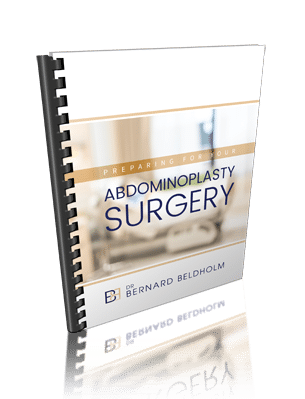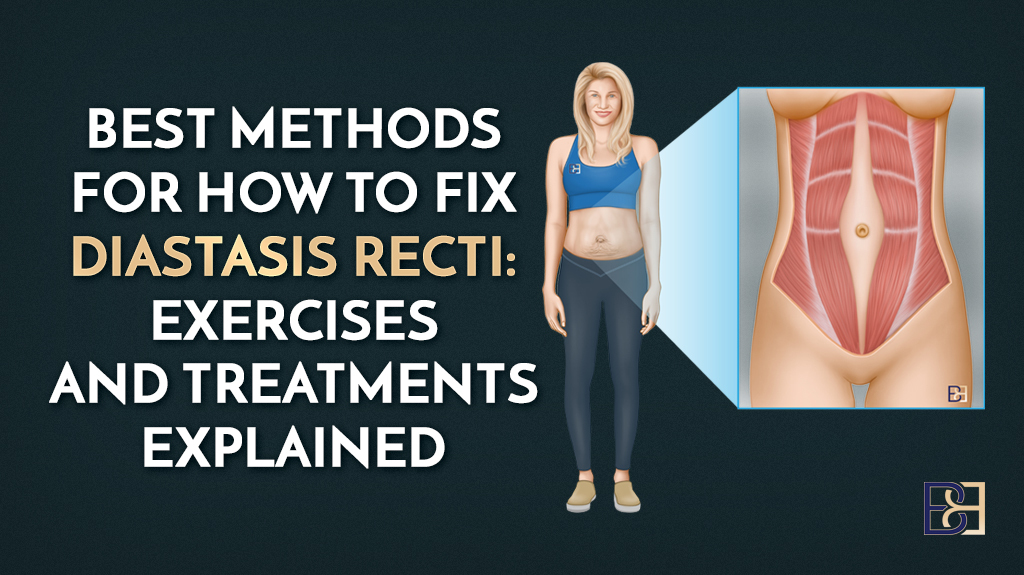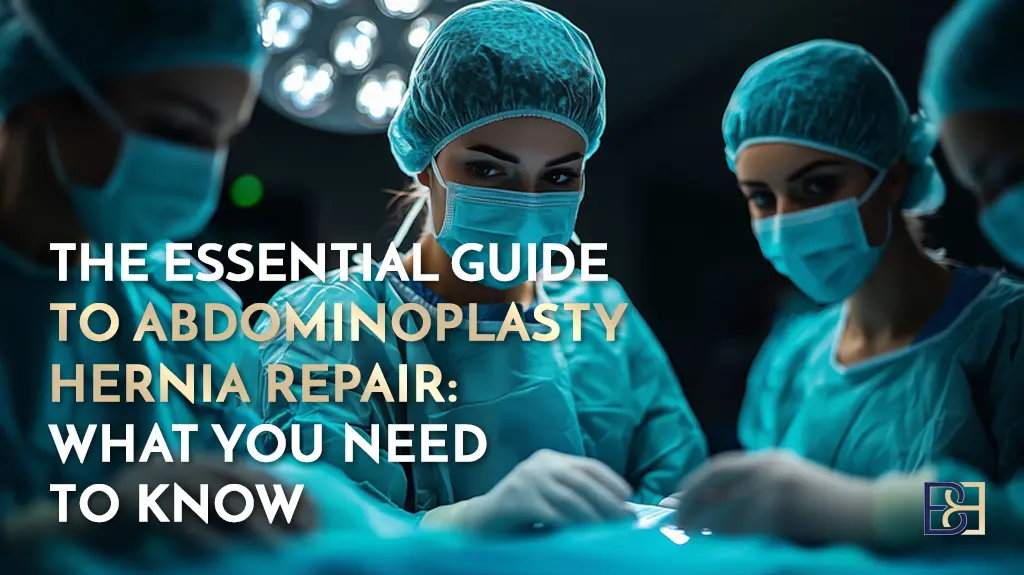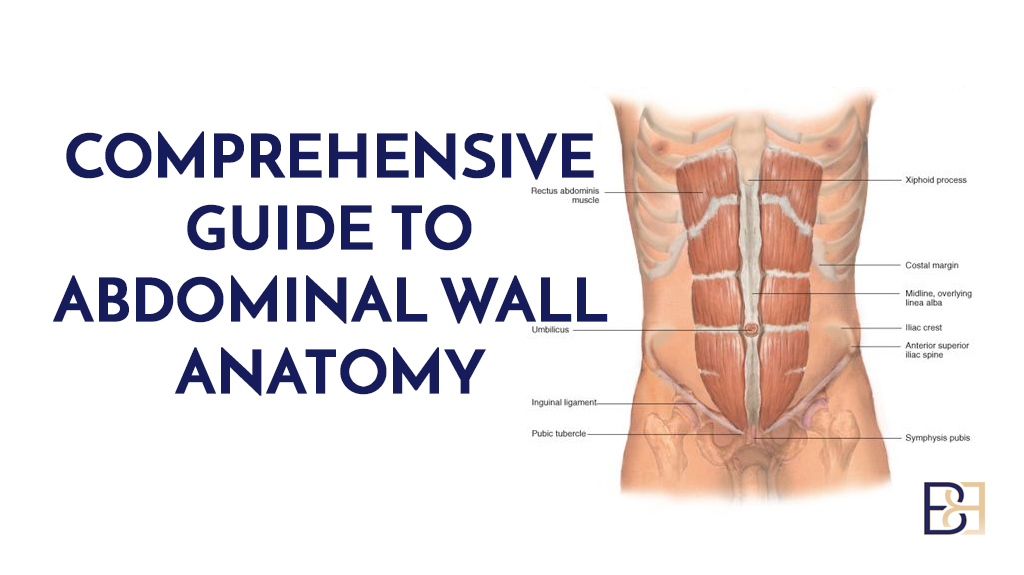Wondering what type of abdominoplasty do I need? You’re not alone. Abdominoplasty treats different needs through various procedures like full, mini, and extended abdominoplasties. This guide will help you understand what abdominoplasty do I need and choose the option that best suits your body and goals.
Key Takeaways
- Abdominoplasty focuses on creating a flatter abdomen by tightening muscles and removing excess skin, but it’s not for everyone; individual health and body conditions matter.
- There are three main types of abdominoplasties: full, mini, and extended, each designed for different needs based on excess skin, fat, and muscle separation.
- Consulting a qualified specialist surgeon like Dr Beldholm and preparing properly for the surgery are crucial steps that can significantly impact the outcome and recovery process.
Understanding Abdominoplasty
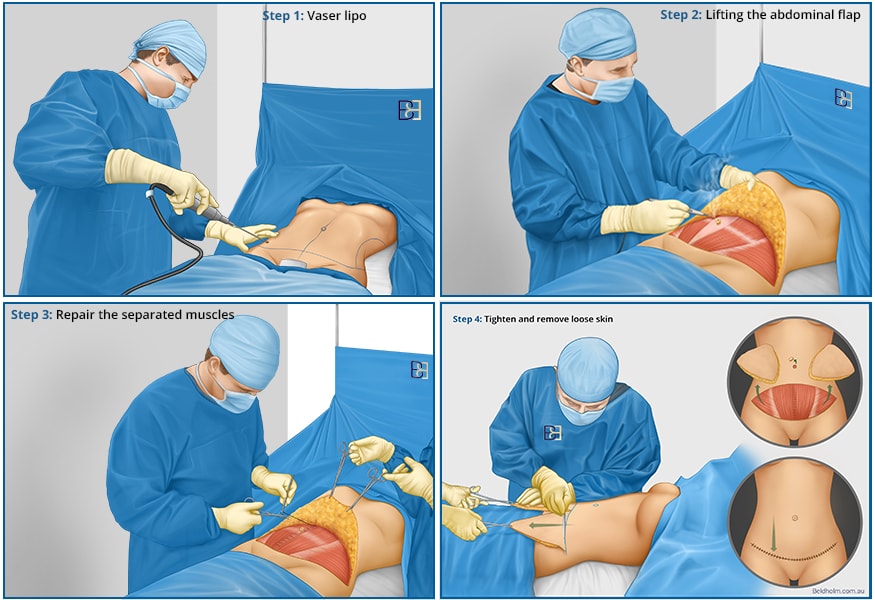
Book your appointment online now
Abdominoplasty surgery is a popular operation aimed at improving the appearance of the abdominal area. Many people seek this surgery to achieve a flatter, more toned abdomen. The primary reasons for considering a abdominoplasty include appearance, but it can also serve as a reconstructive operation.
This surgical procedure focuses on tightening the abdominal muscles and eliminating excess fat and loose skin. It’s not just about looking good; it can also help one regain the function of separated abdominal muscles after significant weight loss or pregnancy. However, abdominoplasty is not suitable for everyone. Individual factors such as overall health, lifestyle, and specific body conditions must be considered before opting for this major surgery.
Realistic expectations are essential when approaching abdominoplasty. Experienced specialist surgeons like Dr Beldholm can help determine if this cosmetic procedure suits you and which specific type of abdominoplasty will best meet your needs.
Types of Abdominoplasties
When it comes to abdominoplasty, one size definitely does not fit all. There are four primary types of abdominoplasties: full, mini, extended and fleur-de-lis abdominoplasty. Each type is designed to treat different needs and focus on different conditions.
Understanding the distinctions between these procedures enables a more informed decision about which one might be best for you.
Mini Abdominoplasty Surgery
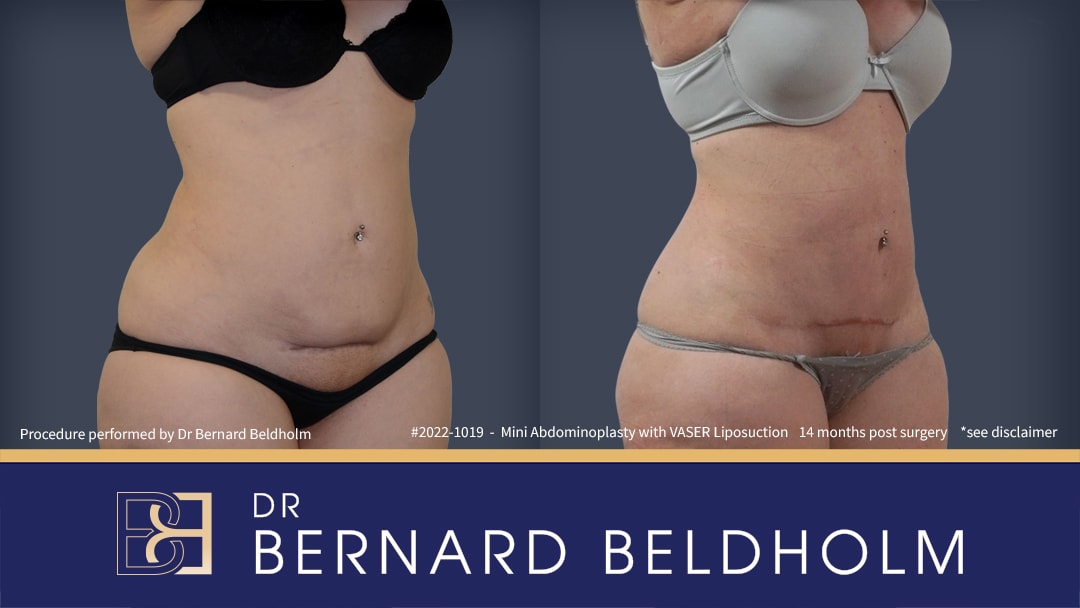
Disclaimer: Operation performed by Dr Bernard Beldholm. Adult content, surgery has risks; individual results vary, seek 2nd opinion. Please see the full disclaimer.
For those with minimal excess skin and fat, a mini abdominoplasty might be the most suitable option. This procedure focuses solely on the lower abdomen, making it less invasive than a full abdominoplasty . It’s ideal for individuals who are generally in good shape but have a small amount of loose skin and fat below the belly button (umbilicus).
The mini abdominoplasty involves a smaller incision and typically results in a shorter recovery time. Since it targets only the area below the umbilicus, it’s a suitable option for those looking for a subtle yet effective results without undergoing major surgery. The results are a smoother, more toned lower abdomen with minimal scarring.
If there is muscle separation limited to the lower abdomen, a mini abdominoplasty may be the most appropriate choice. This procedure is specifically designed to treat minor cases of muscle separation, focusing on the area below the navel.
Full Abdominoplasty Surgery
Disclaimer: Operation performed by Dr Bernard Beldholm. Adult content, surgery has risks; individual results vary, seek 2nd opinion. Please see the full disclaimer.
A full abdominoplasty is a more extensive form of the procedure. It requires a larger incision and focuses on the entire abdominal area by removing excess skin and tightening the muscles. The incision typically extends from hip to hip.
During a full abdominoplasty, the surgeon makes a horizontal incision across the lower abdomen, allowing for the removal of excess skin and the tightening of abdominal muscles. The Umbilicus (belly button) is repositioned. This type of abdominoplasty is particularly beneficial for those dealing with severe muscle separation, as it allows for extensive muscle repair.
The recovery process for a full abdominoplasty can be more intense, given the extent of the surgery. Patients should expect a longer downtime and more visible abdominoplasty scars. However, the results can be life-changing, offering a significantly firmer and flatter abdomen.
Want to know how Dr. Beldholm performs his VASER lipo-abdominoplasties? Check out this article: “Dr. Beldholm’s Modern Approach to “Drainless” Lipo-Abdominoplasty”
Extended Abdominoplasty Surgery
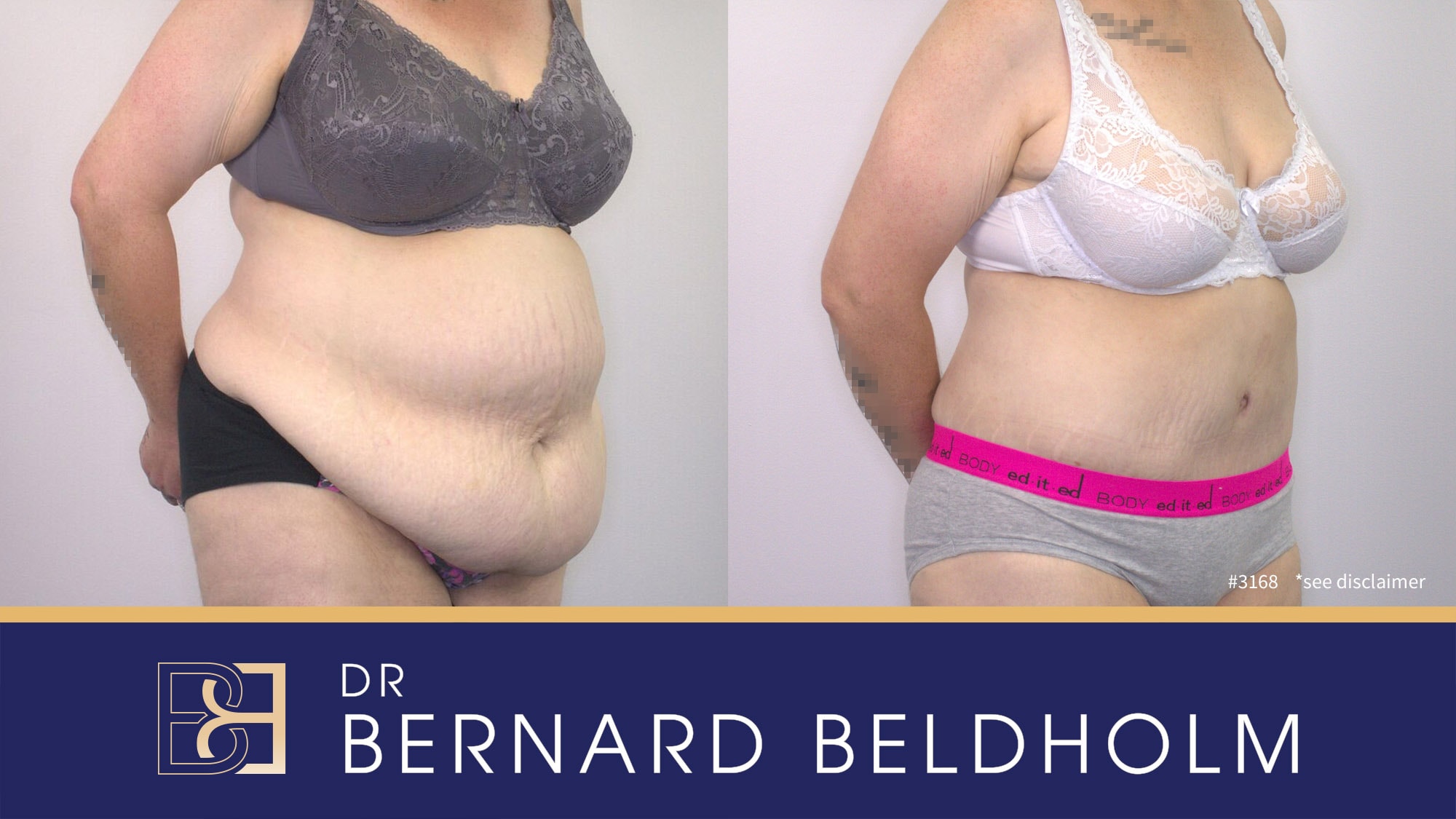
Tattoo blurred for privacy
Disclaimer: Operation performed by Dr Bernard Beldholm. Adult content, surgery has risks; individual results vary, seek 2nd opinion. Please see the full disclaimer.
An extended abdominoplasty is designed for individuals with significant excess skin and fat not only in the abdomen but also around the flanks and lower back. This procedure requires a longer incision, which allows the surgeon to focus on more extensive areas of skin.
During an extended abdominoplasty, the surgeon removes excess skin and fat from the lower back and flanks, in addition to the abdomen. This results in a more comprehensive contouring effect, making it suitable for those who have undergone massive weight loss and are left with a lot of loose skin.
While the extended abdominoplasty involves a more extensive surgical procedure, the results can be dramatic.
Fleur-de-lis Abdominoplasty Surgery
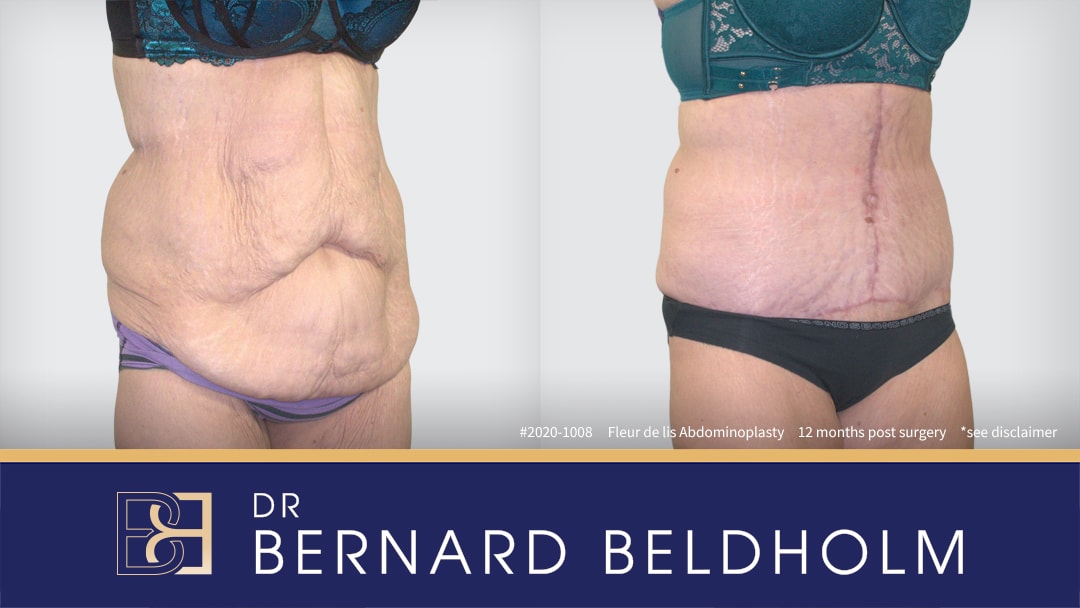
Disclaimer: Operation performed by Dr Bernard Beldholm. Adult content, surgery has risks; individual results vary, seek 2nd opinion. Please see the full disclaimer.
The fleur-de-lis abdominoplasty is a specialised form of abdominoplasty designed for individuals with significant excess skin and fat, particularly after massive weight loss. Named after the shape of the incision, which resembles the fleur-de-lis symbol, this procedure allows for the removal of a larger amount of skin and fat from both the horizontal and vertical planes of the abdomen.
During a fleur-de-lis abdominoplasty, the surgeon makes a vertical incision from the lower chest down to the pubic area, in addition to the traditional horizontal incision across the lower abdomen. This dual-incision approach enables the removal of excess skin and fat from the upper, middle, and lower abdomen, as well as the flanks.
However, due to the more extensive nature of the surgery, patients should be prepared for a longer recovery period and more visible scarring compared to other types of abdominoplasties. The vertical and horizontal scars may take time to fade.
Find out more about this operation in my comprehensive guide: “Dr. Beldholm’s Step-by-Step Guide to Fleur-de-Lis Abdominoplasty”
Adding VASER suction-assisted lipectomy (liposuction) to Your Abdominoplasty
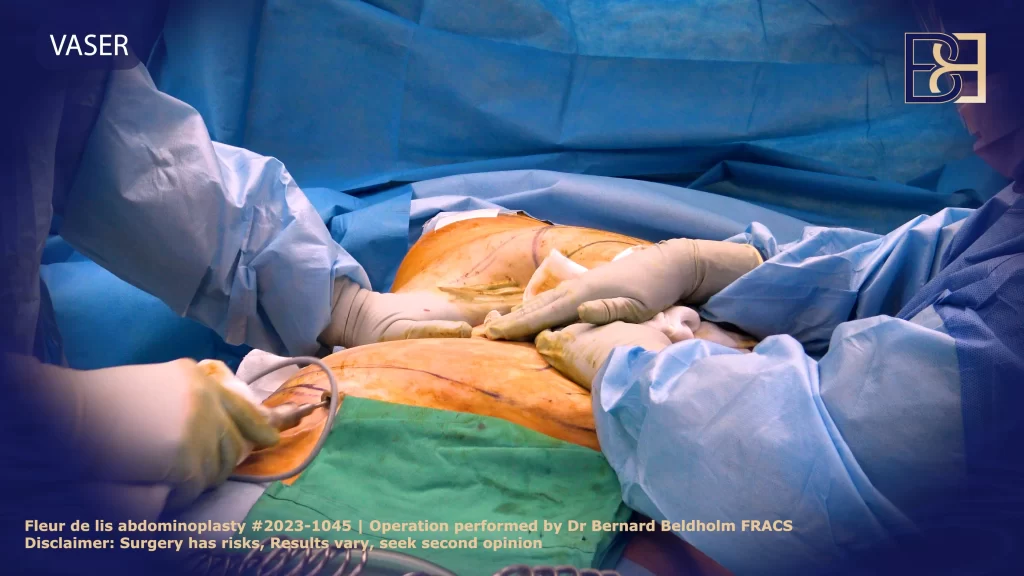
Those looking to elevate their abdominoplasty results might find adding VASER suction-assisted lipectomy (liposuction) an excellent option. VASER suction-assisted lipectomy (liposuction) uses ultrasonic technology to break down fat cells, making it easier to remove them from the body. This technique can provide more precise results.
Dr Beldholm usually uses this for post-pregnancy patients and for post-weight loss patients that have not lost all their excess weight. For patients who have undergone significant weight loss with minimal remaining fat, this procedure is generally not recommended.
Factors Influencing Your Choice
Several factors influence the choice of the right type of abdominoplasty, including the amount of excess skin, the degree of muscle separation, and any previous abdominal surgeries. Considering these factors helps you and your surgeon determine the most suitable procedure for your needs.
Amount of Excess Skin

The amount of excess skin you have is a significant factor in determining which type of abdominoplasty is right for you. If you have a considerable amount of loose skin, an extended or fleur-de-lis abdominoplasty might be necessary to achieve this. These procedures involve more extensive removal of excess skin and fat, as well as tightening the abdominal muscles.
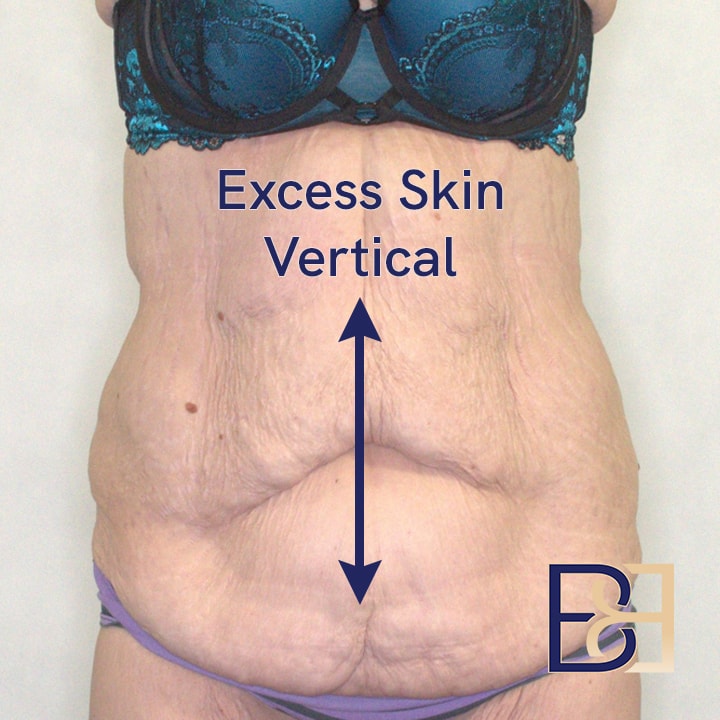
For those with minimal excess skin, a mini Abdominoplasty might be more appropriate. This less invasive option focuses on the lower abdomen and involves a smaller incision. Evaluating the extent of loose skin is essential for making informed decisions about the appropriate tummy tuck (Abdominoplasty) procedure.
Diastasis Recti (Muscle Separation)
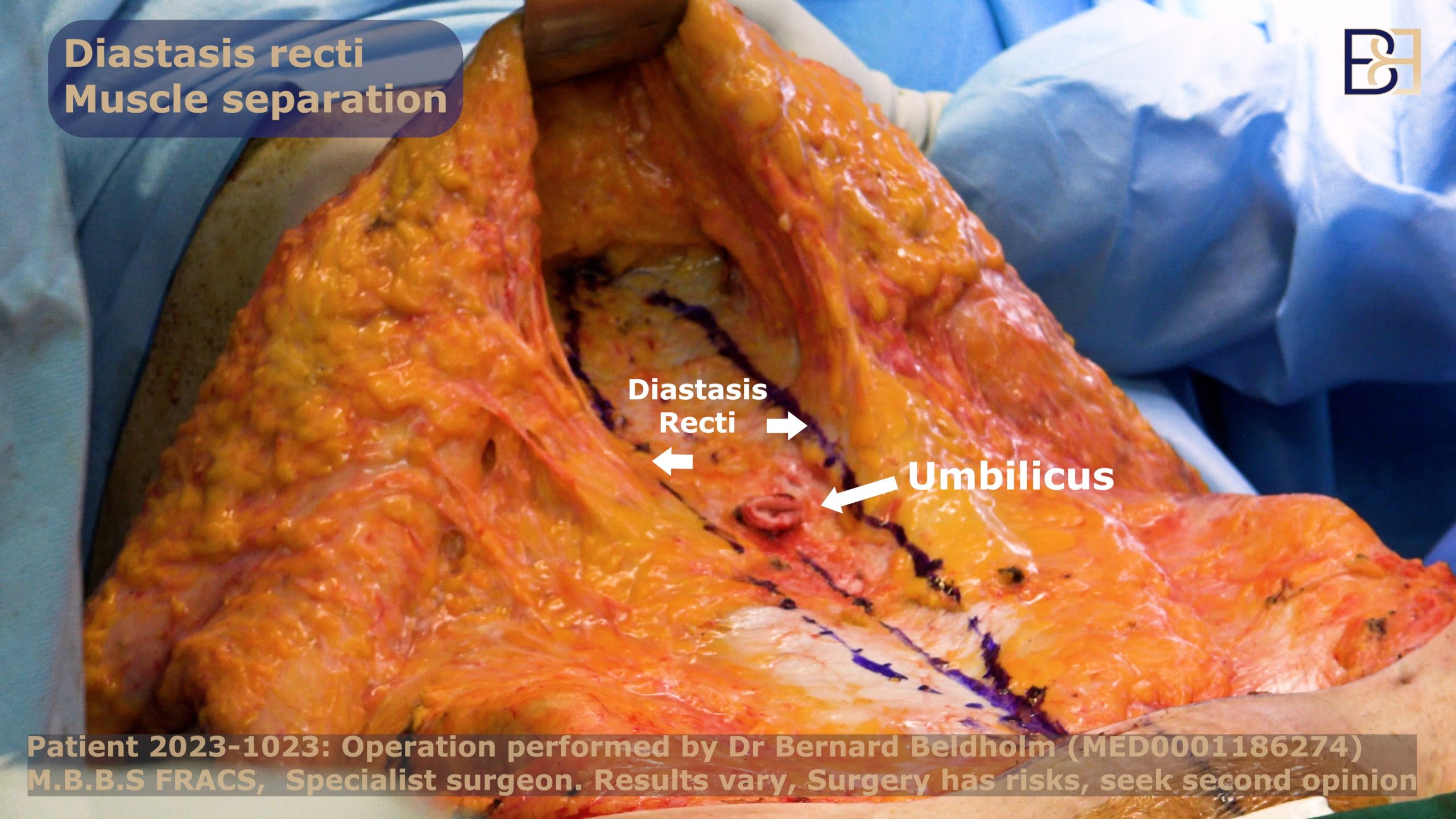
Muscle separation, or diastasis recti, is another critical factor to consider. This condition, often caused by pregnancy or significant weight fluctuations, involves the separation of the abdominal muscles. Repairing these separated muscles is essential for achieving optimal aesthetic results and core function.
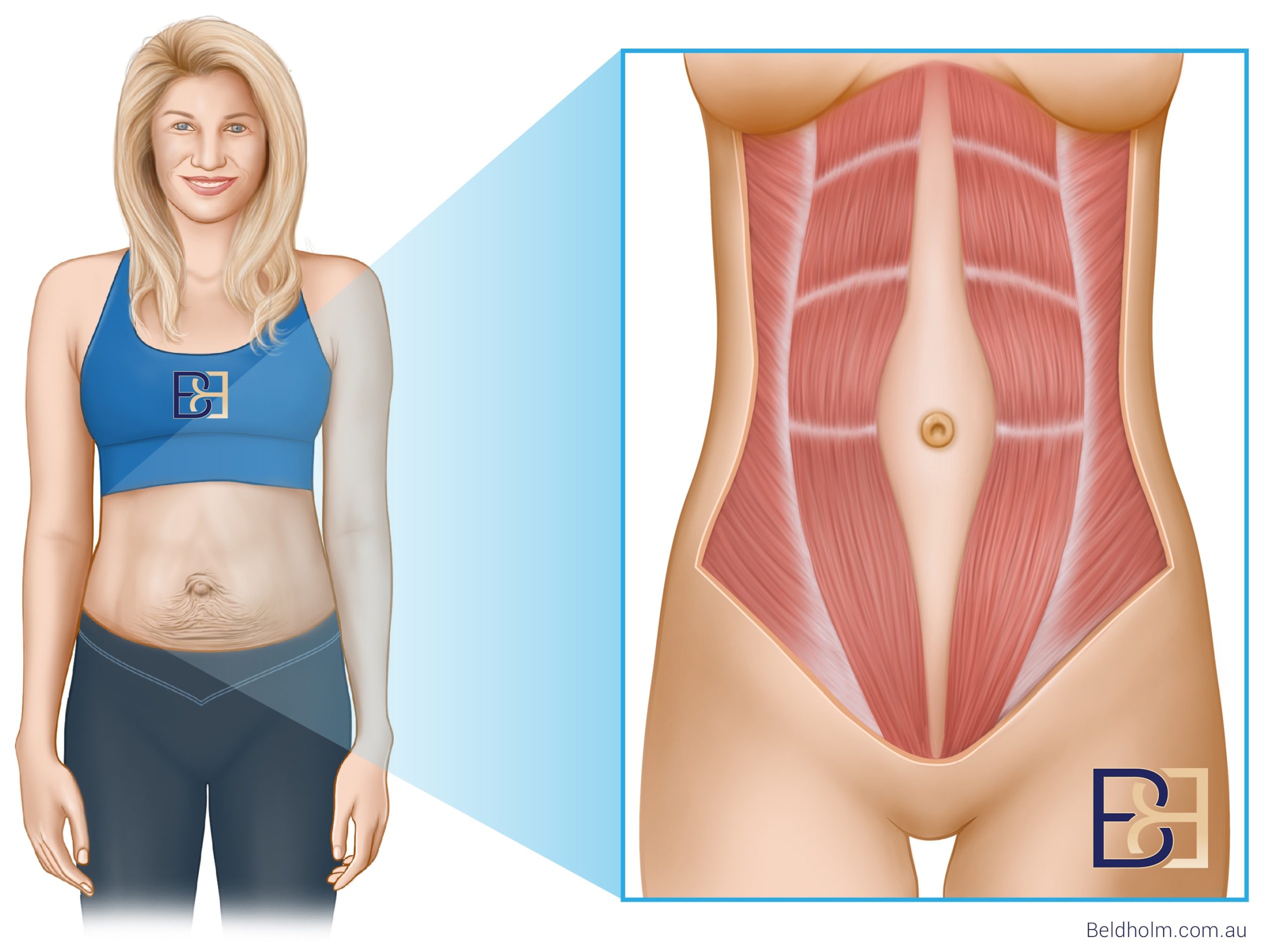
A full abdominoplasty often treats severe muscle separation, allowing for comprehensive muscle repair. Repairing muscle separation during abdominoplasty is vital for achieving a flatter, more toned abdomen and enhancing overall core strength.
Previous Abdominal Surgery
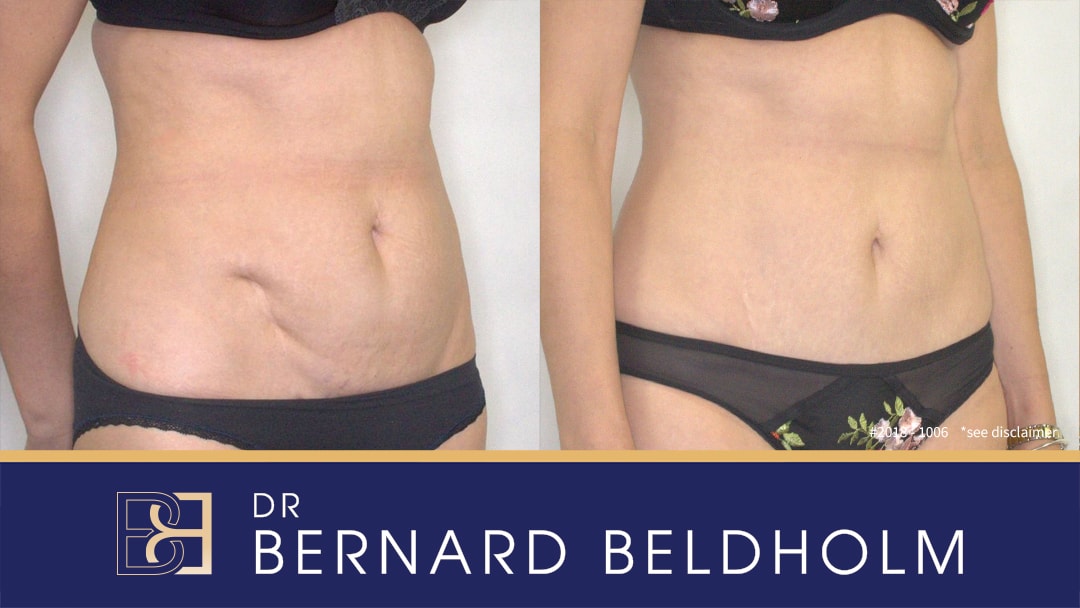
Disclaimer: Operation performed by Dr Bernard Beldholm. Adult content, surgery has risks; individual results vary, seek 2nd opinion. Please see the full disclaimer.
If you have had previous abdominal surgeries, such as a cesarean section or appendectomy, this can affect your tummy tuck (Abdominoplasty) procedure. Scar tissue from previous surgeries can complicate the abdominoplasty and influence the choice of technique used. Surgeons need to evaluate the location and characteristics of existing scars to plan the incision approach and reduce visible scarring.
Consulting with a qualified specialist surgeon like Dr Beldholm to discuss your complete medical history and tailor the surgery to your specific needs is crucial.
Preparing for Abdominoplasty
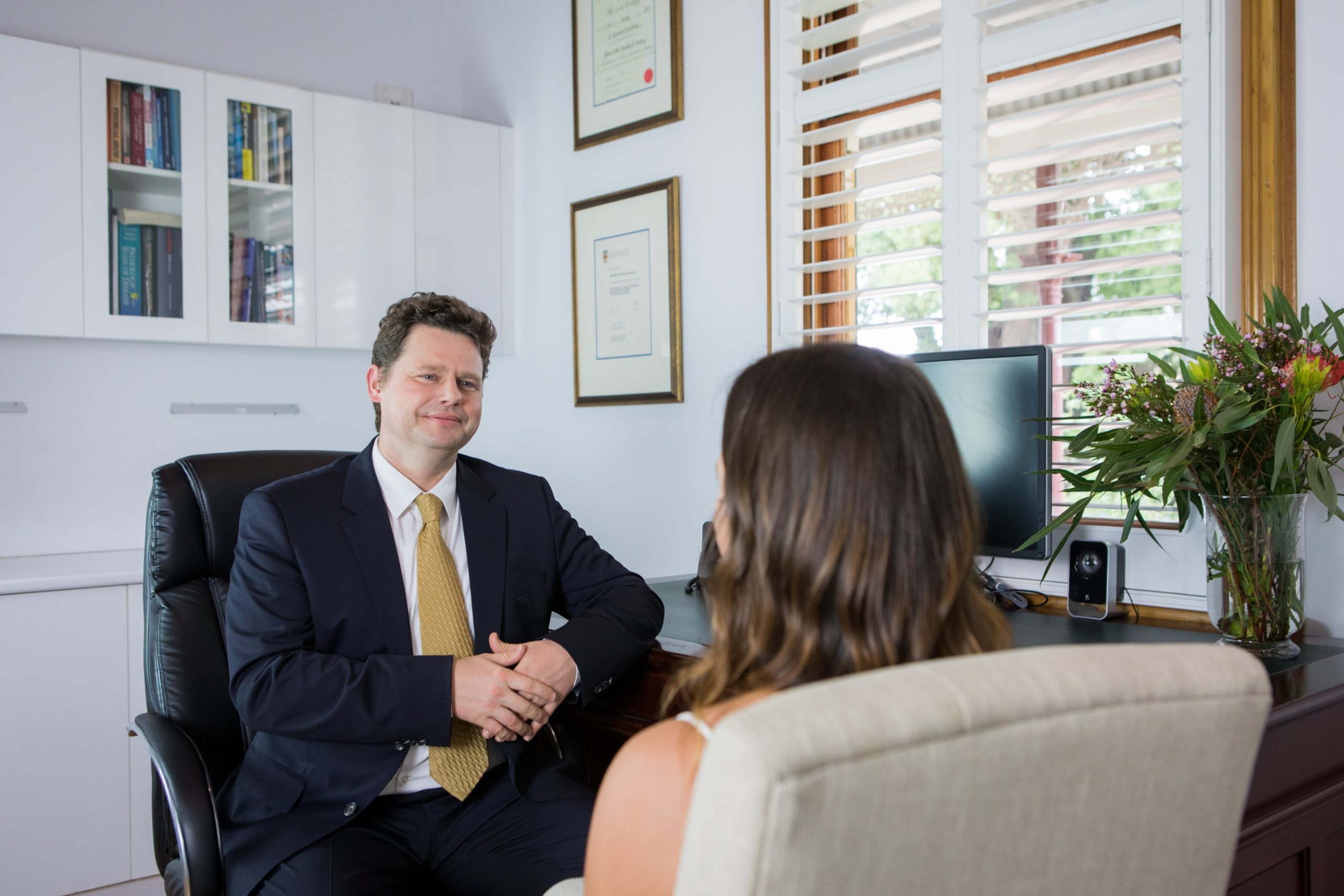
Preparing for abdominoplasty involves several important steps. Pursuing the surgery after achieving your goals through diet and exercise is recommended. The surgery does not prevent future weight gain, so maintaining a stable weight post-procedure is crucial.
Make sure to check out my article for more information on how to prepare for your abdominoplasty surgery. “Getting Ready for An Abdominoplasty Consultation”
Recovery Process
After the surgery, you will wear a compression garment to support the healing process for up to 6 weeks. During recovery, you can expect bruising, swelling, pain, and difficulty standing straight.
Walking around after the procedure is recommended to prevent blood clots. Typically, you can expect to return to light work within 1 to 3 weeks after the operation. It depends on your recovery progress. Avoiding any strain on the wounds for at least 6 weeks following the surgery is advisable.
Having a support system arranged for post-surgery assistance is essential for a smooth recovery. Creating a designated recovery area at home can greatly facilitate comfortable healing.
Find out more about the recovery after abdominoplasty in this article: “Recovery Timelines for Abdominoplasty (Tummy Tuck) Surgery”
Potential Risks and Complications
Like any major surgery, an abdominoplasty comes with potential risks and complications. Post-surgery, patients may experience poor healing along the incision line, which can result in separation. Fluid accumulation beneath the skin, known as seroma, can also occur.
Unexpected scarring and changes in skin sensation, such as numbness, may occur and typically resolve over time. Risks of tissue damage, particularly if smoking is involved, can increase healing risks. Adverse reactions to anesthesia are another potential risk associated with undergoing a tummy tuck.
Want to know more about abdominoplasty complications then check out my article: “It’s Complicated: The Patient’s Complete Guide to Abdominoplasty Risks”
Dr Beldholm’s Final Conclusion
As a specialist surgeon focusing on abdominoplasty, I feel that an abdominoplasty offers both aesthetic and functional benefits. By understanding the different types of Abdominoplasties—full, mini, extended, and fleur-de-lis—you can make an informed decision about which option best suits your needs. It’s crucial to consider factors like the amount of excess skin, muscle separation, and any previous abdominal surgeries when selecting the right procedure.
Consulting with a qualified specialist surgeon and preparing adequately for the surgery are essential steps for a successful outcome. While the recovery process can be challenging, the results can be life-changing, providing a flatter and more toned abdomen. Ready to take the next step towards a new you? I’m here to help you every step of the way.
Book your appointment online now
Frequently Asked Questions
What is the difference between a full abdominoplasty and a mini abdominoplasty?
A full abdominoplasty covers your whole abdomen with a bigger incision, while a mini targets just the lower belly with a smaller cut and a faster recovery. So, it really depends on how much area you want to focus on!
Can I undergo an abdominoplasty if I’ve had previous abdominal surgery?
Absolutely, you can still get a abdominoplasty after previous abdominal surgery. Just make sure to chat with your surgeon about your medical history so they can plan it right for you.
How long is the recovery process after an abdominoplasty?
The recovery after abdominoplasty usually takes a few months, but you can get back to light work in about 1 to 3 weeks and wear a compression garment for around six weeks. Just be patient with your body during the healing process!
What are the potential risks and complications of an abdominoplasty?
An abdominoplasty can lead to complications like poor healing, fluid buildup, scarring, altered skin sensation, and even issues with anesthesia. It’s important to weigh these risks before going under the knife.

